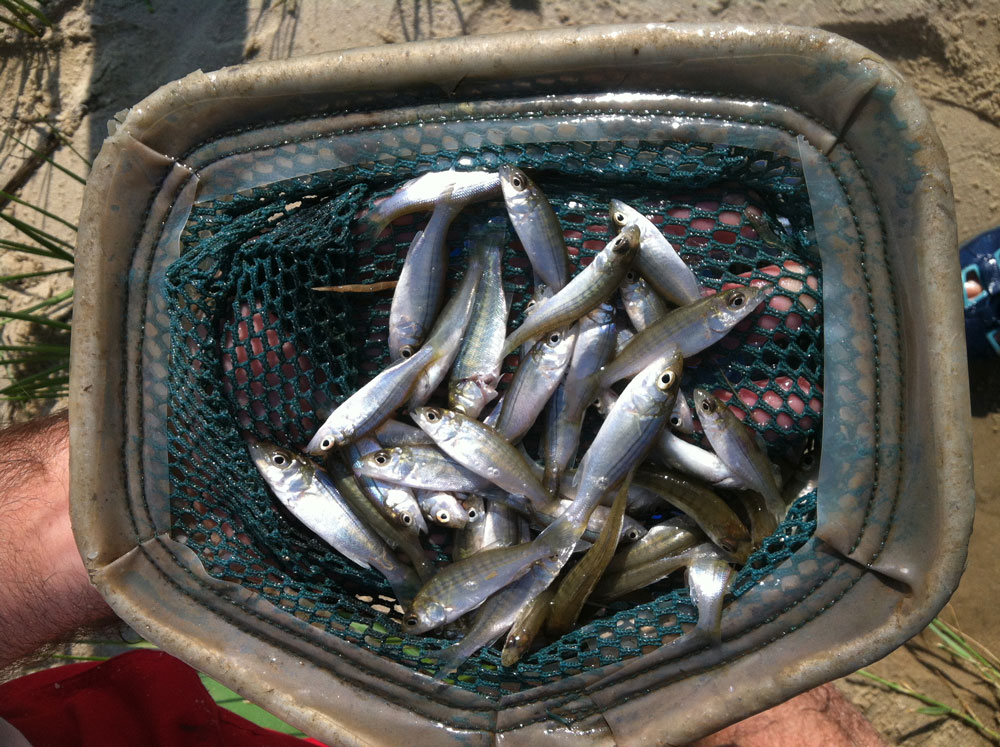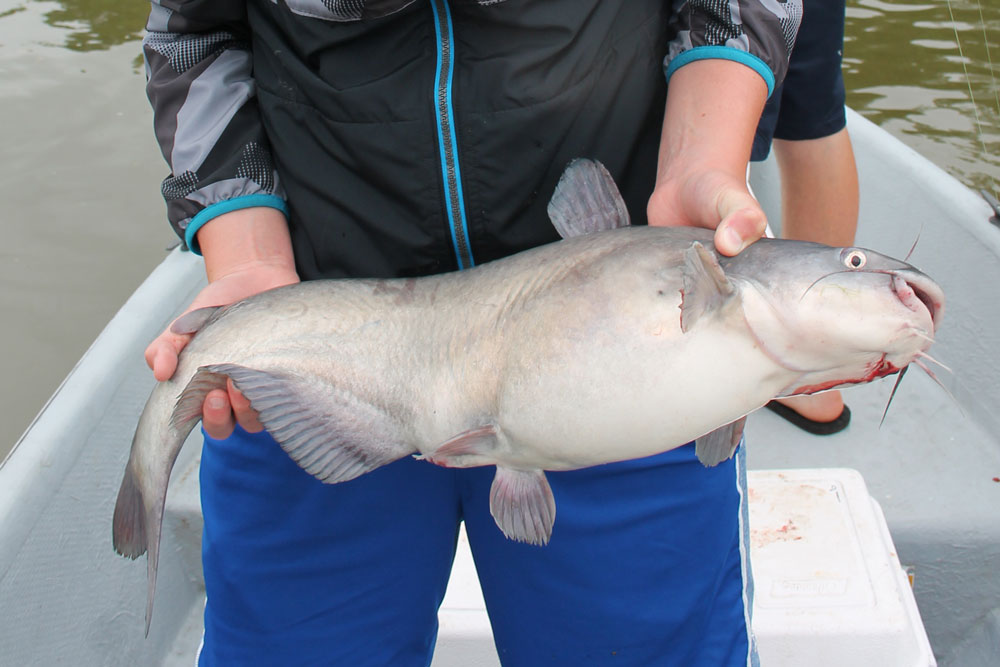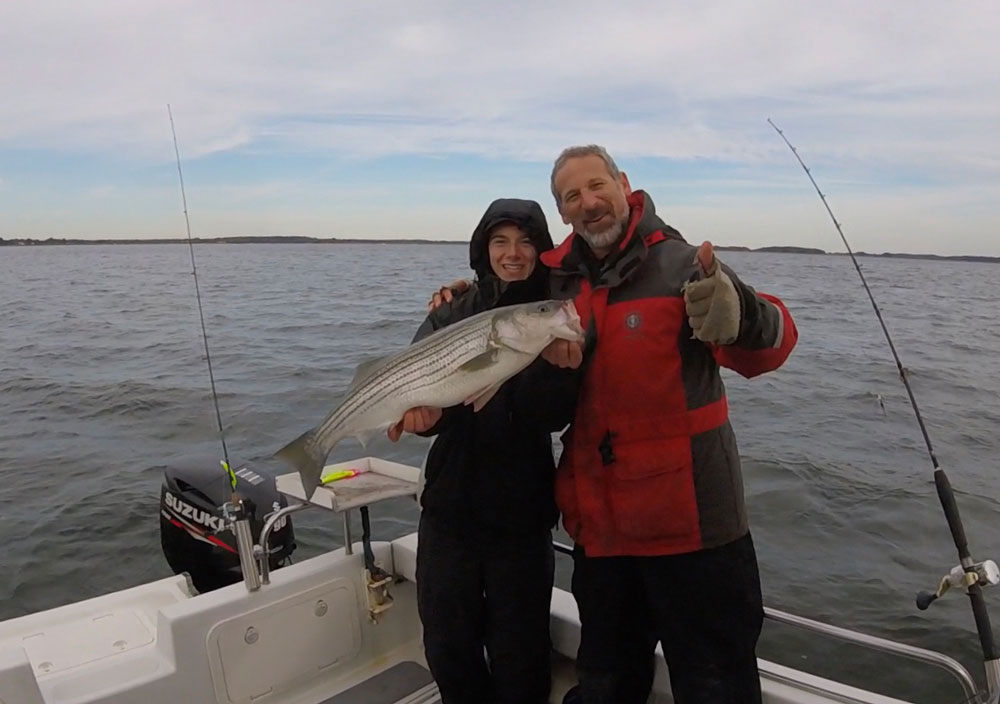As December winds down and our weekly Fishing Reports get a little harder to come by, it's time to take a look back at some of the top Fishing News stories of the month. There was a lot of good news, some not so great news, and some news that just makes one say "Really?" But one thing is for sure: none of this is fake news!
Chesapeake Rebound
Good news for Chesapeake Bay dwellers, in the water quality department! Maryland’s DNR reports that 2017 was the second-best on record. The dead zones were the smallest since 1985, with an average 13.6 percent of sampled waters being hypoxic. The average from 1985 to 2017 is 18.9 percent. Reduced flow (with 2011 being the last above-average year) contributing to lower nutrient levels, and windy conditions that better mix oxygen deep into the water column, get much of the credit.

The DNR has also announced that the young-of-year survey shows a strong spawn this year, with a striped bass index of 13.2 as compared to the average of 11.7. The upper Chesapeake performed best. In the upper Bay and also in the Nanticoke, white perch also appear to have done exceptionally well. And American shad reproduction in the Potomac was above average, as well.
Oysters Can... Hear?
According to a study published in the scientific journal PLOS ONE, oysters may be sensitive to man-made noises with 60- to 90-percent responding to sounds in the 10 to 200 Hz range. Why should we care? Because we already know that other sea creatures can be affected by man-made sounds (think: marine mammals and sonar, or ground-penetrating radar and its apparently negative effect on the finfish bite; remember the Mid-Atlantic Coastal Angler Alert from this summer?) Scientists performing the study hypothesize that man-made sound could actually stunt oyster growth, as their response to the low-frequency noises — which fall within a similar range of the underwater sounds created by cargo ship propellers — was to reflexively close up tight and cease feeding.
Wondering About Weakfish
With the good numbers of incidental weakfish caught this past season, it’s time to look towards 2018 with reasonable hopes of catching some keepers — but you won’t be able to keep very many of them. In fact, anglers in Delaware, Maryland, and Virginia water all are limited to one fish.
While it’s true that weakfish (also known as gray trout, or yellowfin trout) have been quite scarce in our waters for about 15 years, it’s just as true that this happens time and time again. A 1965 publication of McClaine’s Standard Fishing Encyclopedia bemoaned the “end of the era of large weakfish,” yet a 1975 article in Sportsman Illustrated rejoiced that the “semi-extinct” species had returned in numbers including “the biggest fish in the memory of anyone alive.” A 1995 edition of Field & Stream noted Maryland adopting the “emergency measure” of increasing the size limit from 12 to 14 inches for gray trout (though the creel limit remained at 10), but a 1998 Washington Posts fishing report mentions “trout up to nine pounds being caught two at a time.”
The ASFMC currently lists weakfish stocks as “depleted,” and we here at FishTalk certainly want to support reasonable fisheries regulations that keep our stocks in good health. But we also fear that should weakfish stocks prove cyclical, as they have for as long as Google and any old-timer alive can remember, and they rebound in the near future, it will take years for regulations to shift to reflect such a rebound. History shows that this species has a very rapid rise followed by a short peak in a cycle lasting four or five years, then another rapid drop-off, and then a long 15 year or so wait before the next peak. So a flat-footed response could cause anglers to miss the next peak cycle entirely. It’s an interesting dilemma — keep your eyes on this one, folks.

James and Rappahannock Blue Catfish Update
Recent electroshock fish collections in the James and Rappahannock show that blue cats now account for about 75-percent of the total fish biomass in many tidal areas. On November fourth the Chesapeake Bay Program conducted a symposium at Virginia Commonwealth University, to discuss the status of blue cats in the region and the fishery that has built up around the species. Since this is one of the species we can chase after more or less year-round ad many anglers are sure to turn their attention to wrangling trophy-sized blue catfish as the striper fishery winds down, we want to remind everyone that there are health advisories issued for eating these fish up and down the Bay. These vary by specific bodies of water, and by the agency issuing the redocumentation. In the Pamunkey, for example, the recommendation is no more than two meals per month; in the Mattaponie there isn’t any recommended restriction; in the Potomac Maryland says no more than four eight-ounce meals per month, yet DC recommends not eating them at all.
There is one thing all the agencies seem to agree on: fish under 30 inches of length are relatively safe to eat and the smaller the catfish is, the less potentially harmful contaminants it will harbor. So if you catch that 60-pound trophy, send it right back into the river. But those five and 10 pound fish? Feel free to fillet and release.
New Fishing Regulations for 2018?
At the time of this printing, we were still waiting on the final 2018 regulations to be published for all of the states in our area of coverage. If you go fishing on New Year’s Day — and we hope that you do! — remember to first check for any new changes to the law. You can get a look at each, at the following links:
Virginia (saltwater) and Virginia (freshwater)
Fishing Tournament News
Little Havana Roctober Cup Recap
The Little Havana Roctober Cup went off without a hitch on October 21st, with Ron McMorrow and his team sweeping first prize and all three calcuttas with a 33-inch fish and a 90.75-inch stringer length. Ginny Joseph took the woman’s division with a 25.75-incher, and Carter Whaley wrapped it up the youths with a 27.25 inch fish. Meanwhile, the Back River Restoration pulled trash out of the Baltimore area waters in the Harbor Trash Tour component of the event.
Fish For a Cure Recap
The 2017 Fish For a Cure tournament may be in the history books, but the good it does will be carrying on for quite a while. Though an exact tabulation hadn’t yet been made when we went to press, it looks like this year’s fundraising tournament will break the $400,000 barrier—topping the 2016 fundraising effort by $50,000. Team Just In Time, captained by Rob Schurr and Tom George, took top honors in the Captain’s Challenge by raising a whopping $39,375. Captain Brian Heller and team Alternating Currents took second, raising a shocking $39,215. Captain David Jenkins led Team Luki Bell to third with an amazing $21,315 raised.

While Team FishTalk/PropTalk didn’t quite reach the same heights, considering that this was our first year of competition we were quite pleased to have raised $3,760 and come in 25th out of 79 boats. We were also happy to score seventh in the Catch and Release division, and bring in a beautiful bag of fish for the Slam category. Fish-crushing Kaylie Jasinski caught first and most for our team, while honorary FishTalk Pro Max Rudow caught the biggest fish of the day, a 28.5 incher. Zach Ditmars handled our catch and release entries and won the award for the most lure changes (425 is a 12 minute period), while head fish-head and captain Lenny Rudow cranked in three seagulls and a sea squirt (there may have been a few fish mixed in there, too, but we’re waiting for the photographic evidence before we believe it).
Top fish in the tournament included a first-place 18.82 pound striper hauled in by John Chisholm, fishing for team Ellen B/Atlantic Forest Products; an 18.5 pounder caught by Nick Garrot for team Trolling is for Golfers, and a 17.9 pound striper reeled up by Jeff Crane and weighed by team CSF. The Catch and Release winner was Strike Zone’s Eric Milton with three combined fish measuring 92 and 3/8 inches, second place went to Tidewater Charters and Tyler Nonn with 91.25 inches, and third to Nick Garrott with 90.5 inches. Additional prizes went to teams with the heaviest stringer of perch; Havtech/Daikin’s Tom Whitely weighed 2.82 pounds, Stanley Watkins on the Miss Cleo hit 1.87 pounds, and Scott Davis of team Dirty Blond Sport Fishing took third with 1.62 pounds of perch. The prize for the Slam was awarded to team Leigh Family Dentistry, with a striper, a white perch, and a yellow perch.
The fishing that took place is, of course, secondary in importance. What really counts is the money raised for the Geaton and JoAnn DeCesaris Cancer Institute at the Anne Arundel Medical Center. Now in its 11th year, prior to this tournament the Fish For a Cure had already donated over $1.35 million to AAMC. That figure just took a big, big leap forward.